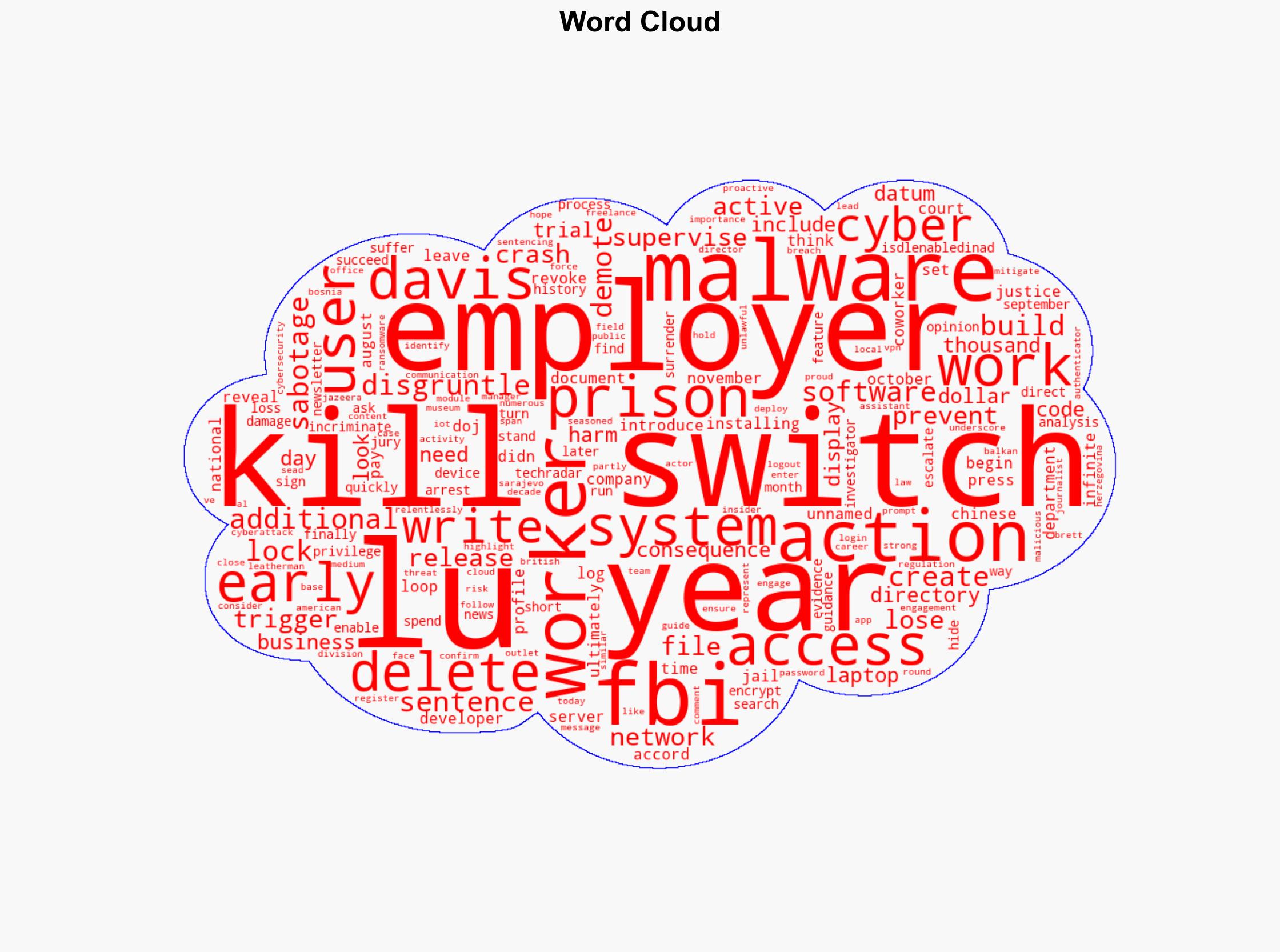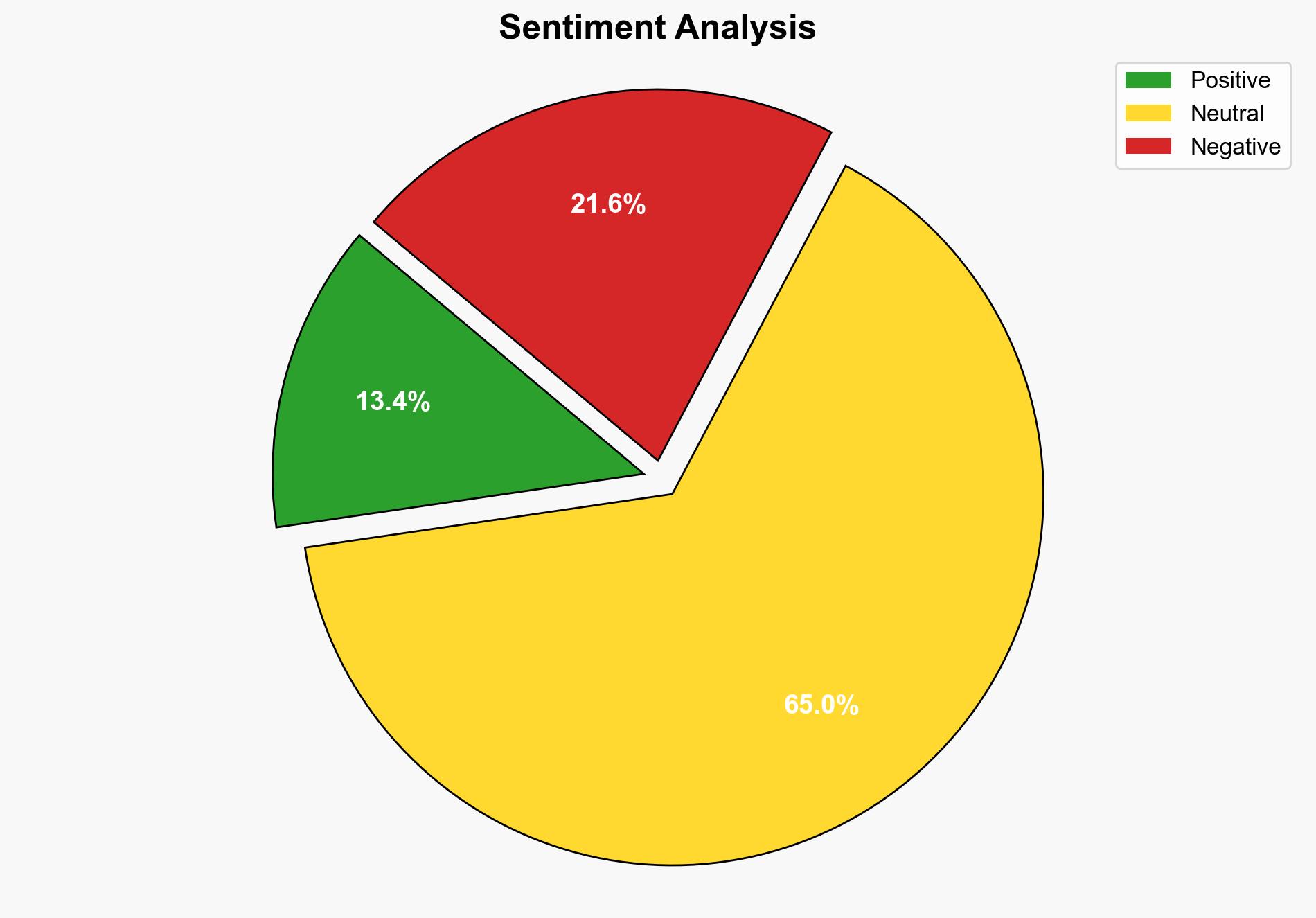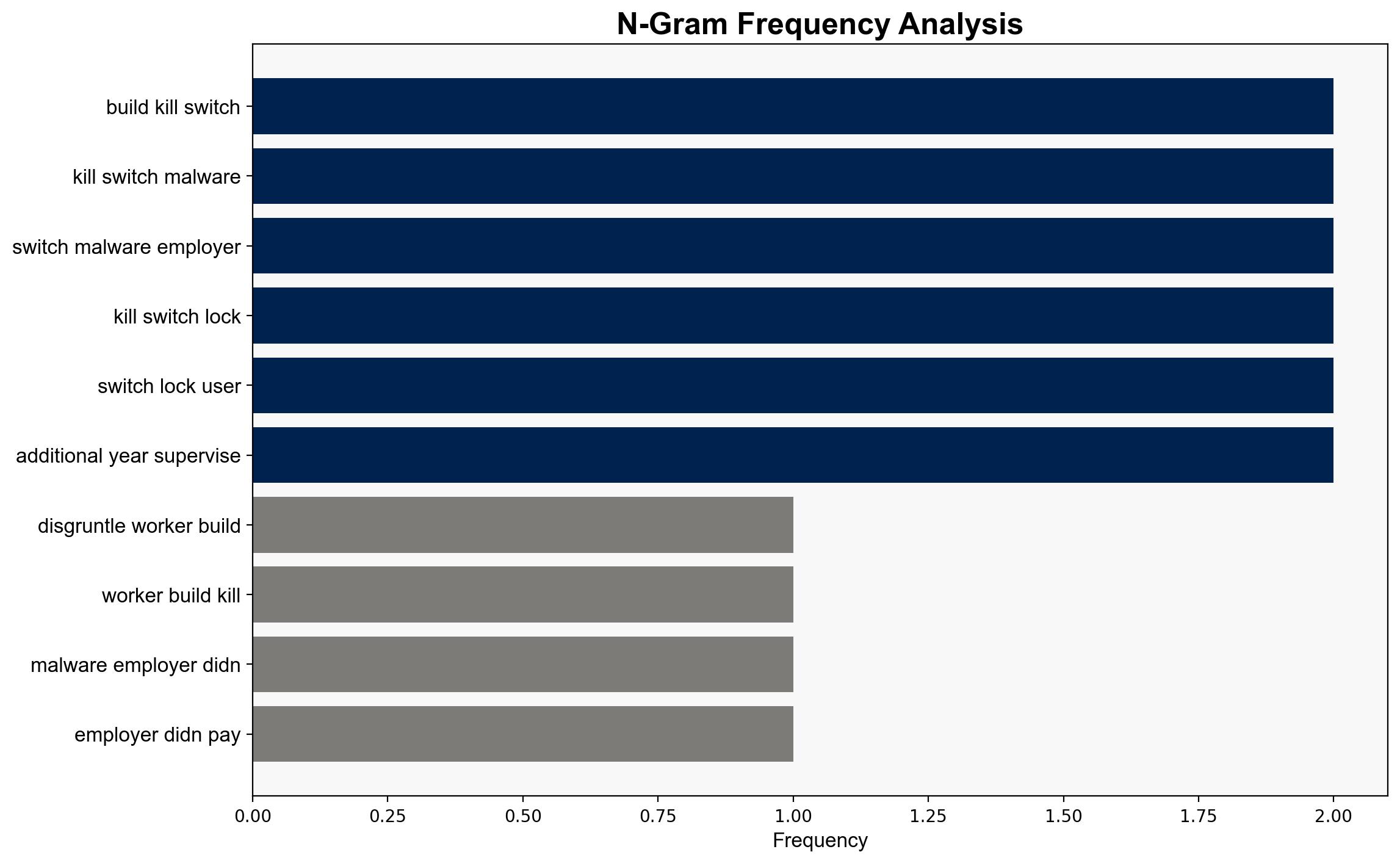A disgruntled worker built his own kill-switch malware to take down his former employer – and it didn’t pay off – TechRadar
Published on: 2025-08-24
Intelligence Report: A disgruntled worker built his own kill-switch malware to take down his former employer – and it didn’t pay off – TechRadar
1. BLUF (Bottom Line Up Front)
The most supported hypothesis is that Davis Lu acted out of personal grievance rather than a coordinated external influence. This conclusion is drawn from the lack of evidence suggesting external involvement and the personal nature of the sabotage. Confidence level is moderate due to potential gaps in the investigation. Recommended action includes enhancing internal security protocols and employee monitoring to prevent insider threats.
2. Competing Hypotheses
1. **Hypothesis A**: Davis Lu acted independently out of personal grievance against his employer, motivated by demotion and loss of access.
2. **Hypothesis B**: Davis Lu was influenced or coerced by an external entity to sabotage his employer, using his personal grievance as a cover.
Using Analysis of Competing Hypotheses (ACH), Hypothesis A is better supported by the evidence. The incriminating evidence found on Lu’s laptop and his search history suggest personal motivation rather than external influence.
3. Key Assumptions and Red Flags
– **Assumptions**: It is assumed that all relevant evidence was uncovered and that Lu’s actions were not influenced by external actors.
– **Red Flags**: Lack of detailed information about potential external communications or influences on Lu. The possibility of missed connections to external entities remains.
– **Blind Spots**: The investigation may not have fully explored Lu’s communications or potential external contacts.
4. Implications and Strategic Risks
The incident highlights the vulnerability of organizations to insider threats, particularly from disgruntled employees. There is a risk of similar attacks if internal security measures are not strengthened. Economically, such attacks can lead to significant financial losses and reputational damage. Psychologically, they can erode trust within organizations.
5. Recommendations and Outlook
- Implement comprehensive employee monitoring systems to detect early signs of insider threats.
- Conduct regular cybersecurity training and awareness programs for employees.
- Establish clear protocols for handling employee grievances to prevent escalation.
- Scenario Projections:
- Best Case: Enhanced security measures prevent future insider threats, maintaining organizational integrity.
- Worst Case: Failure to address insider threats leads to repeated incidents, causing severe financial and reputational damage.
- Most Likely: Incremental improvements in security reduce but do not eliminate insider threat risks.
6. Key Individuals and Entities
– Davis Lu: The individual responsible for creating and deploying the kill-switch malware.
– Unnamed software company: The employer targeted by the malware.
7. Thematic Tags
national security threats, cybersecurity, insider threat, organizational security




